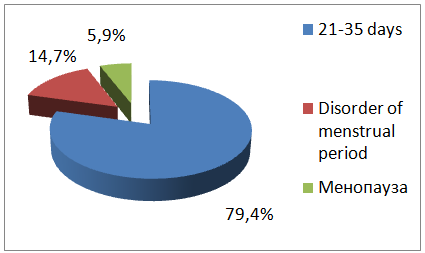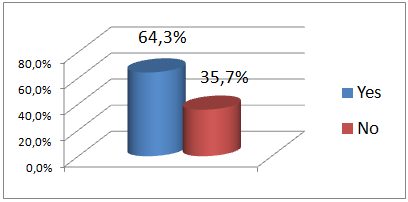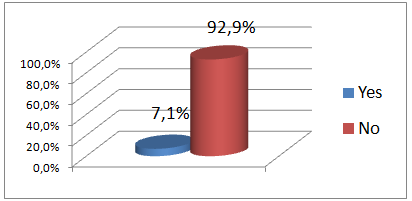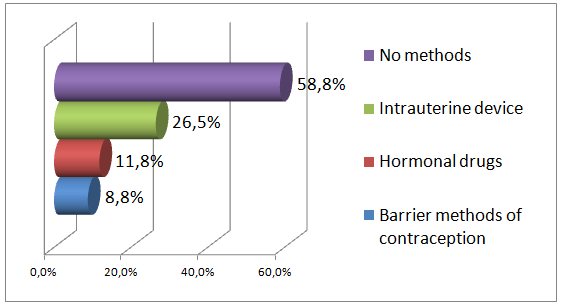РОЛЬ ПАТОГИСТОЛОГИЧЕСКОГО ИССЛЕДОВАНИЯ В ГИНЕКОЛОГИИ
Кобаидзе Е.Г.1, Коротаева А.Э.2, Овсяникова А.В.3
1Кандидат медицинских наук; 2студент; 3студент, Пермский государственный университет им. ак. Е. А. Вагнера
РОЛЬ ПАТОГИСТОЛОГИЧЕСКОГО ИССЛЕДОВАНИЯ В ГИНЕКОЛОГИИ
Аннотация
В данной работе рассматривается значение патогистологического исследования для диагностики различных заболеваний ЖПО.
Ключевые слова: хронический эндометрит, патогистологическое исследование, нарушение менструального цикла.
Kobaidze E.G.1, Korotaeva A.E.2, Ovsyanikova A.V.3
1Candidate of medical sciences; 2student; 3student, Perm State Medical University named after Academician E. A. Wagner
THE ROLE OF GISTOPATHOLOGICAL EXAMINATION IN GYNAECOLOGY
Abstract
The research is aimed at identifying the necessity of using gistopathological examination for detecting different diseases of FGO.
Keywords: chronic endometritis, gistopathological examination, menstrual irregularities.
Chronic endometritis is one of the most serious problems of modern gynaecology. It is determined not only by the high frequency of such a problem among women of childbearing age, but also by the importance of endometrical injury as a cause of menstrual disorder, miscarriage and barrenness.
It means that the problem of preventive measures against chronic endometritis after intrauterine interference is not solved, and there are no methods of diagnosis that help to verify the diagnose avoiding repeated interference into the uterine cavity.
One of the most reliable and informative methods to recognize a disease of FGO is histology. Nowadays histology as a branch of gynaecology is an indispensable method for definition of even serious pathologies.
Histological analysis of endometrical scraping helps to assess ovary function and to discover endometropathy. Material for analysis is obtained by carving pieces of tissue (biopsy) or by trial diagnostic curettage. This procedure is made 2-4 days before menstruation (if it is a normal menstrual period) and at the time of bleeding (if it is dysfunctional flood).
Histology is the universal method for diagnosing diseases of FGO which helps to take measures to cure diseases in their initial stage of development in time.
In this research it was tried to assess the meaning of gistopathological examination in verification of different menstrual disorders.
The aim of the research work is to discover the role of gistopathological examination in verification of different menstrual disorders according to the data of the gynaecology department of Perm Regional Clinical Hospital.
The process and methods of the research: retrospective analysis of 34 cases histories of patients with vasious menstrual function disorders was made. Criterion of insertion to survey sample was the existence of chronic endometritis in pathogystological report.
Results:
Among 34 patients of gynaecology department 74,3% live in the city and 25,7% live in the countryside.
The average age of the patients is 37,5 ± 4,8 years.
The analysis of women's menstrual anamnesis showed that there was the same frequency of algomenorrhea and painless menstruation – 47,1%; 5,9% of cases were postmenopausal women.
82,4% of women had normal duration of menstrual bleeding (it was from 3 to 7 days), hypermenorrhea was observed only in 11,8% of cases.
The majority of patients (44,1%) had menorrhagia and 8,8% had scanty menstruation. Menstrual period was hold normal in 79,4% of cases. At the same time disorder of menstrual period was revealed in 14,7% of cases.
Picture 1. Menstrual period
17,6% of the examined women had barrenness
As a result of the women's anamnesis examination it was discovered that more than a half of the patients (64,3%) had had an abortion and 35,7% had not. 7,1% of the examined women had had one or more miscarriages.
Picture 2. Abortions in anamnesis
Picture 3. Miscarriages in anamnesis
It was also established that the majority of the women (58.8%) had been using no methods of contraception, but 26,5% of the women had been using an intrauterine device, 11,8% of the patients had been taking hormonal drugs and 8,8% had been applying barrier methods of contraception.
Picture 4. Contraception
The diagnoses of the patients at the time of their hospitalization were: 52,9% - endometrial polyp, 32,4% - diffuse hyperplastic process of endometrium, 14,7% - adnexa disorder (chronic salpingitis, adnexitis, polycystic ovarian syndrome). With the purpose of the diagnoses verification hysteroscopy and gistopathological examination of the material were made. As a result of the women's anamnesis examination it was established that overwhelming majority of the patients (97,1% of the cases) had different provisional and clinical diagnoses of the disease, and only in 2,9% of the cases they were the same.
Conclusion.
Some nosologies that are connected with menstrual disorder can conceal clinical findings of different diseases. For verification of the diagnosis and for minimization of the mistakes connected with treatment of patients suffering from various menstrual disorders preference should be given to modern hysteroscopy and gistopathological examination.
References
- Ajlamazjan, Je.K. Ginekologija ot pubertata do postmenopauzy: Prakticheskoe rukovodstvo dlja vrachej / Je.K. Ajlamazjan i dr.; pod red. Je.K. Ajlamazjana – 3-e izd., dop. – M. : MEDpress-inform, 2007. – 495 s
- Glazkova, O.L. Differencial'naja diagnostika v ginekologii. Simptom. Sindrom. Diagnoz / O.L. Glazkova, N.M. Podzolkova, 2005. – 520 s
- Ishhenko, A.I. Novye tehnologii i maloinvazivnaja hirurgija v ginekologii // A.I. Ishhenko. – 2004. – 136 s.
- Kurbanova, D.F. Vospalitel'nye zabolevanija pridatkov matki / D.F. Kurbanova. – M. : Medicina, 2007. – 157 s
- Hirsh, H. Operativnaja ginekologija: Atlas / H. Hirsh, O. Kezer, F. Ikle. – Pod red. V.I. Kulakova, I.V. Fedorova. Izd. «GJeOTAR-Media», 2007. – 656 s




